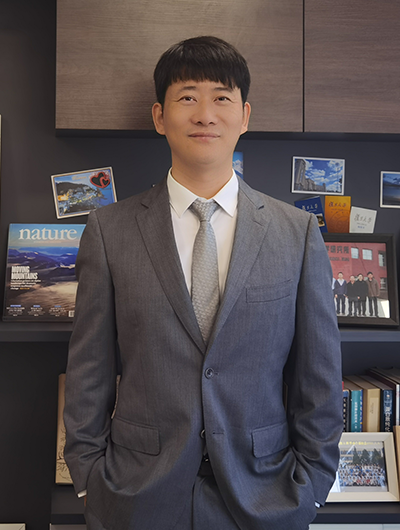
Institute of Molecular Physiology
Deputy Director ,Senior Principal Investigator
zqyan@szbl.ac.cn
Home page of research group:https://www.yan-lab.org/
2020 - Present Institute of Molecular Physiology of Shenzhen Bay Laboratory Vice Director, Senior Principal Investigator
2014 - 2020 Fudan University Professor
2009 - 2014 HHMI & UCSF Postdoctoral Researcher
2004 - 2009 Institute of Neuroscience, Chinese Academy of Sciences, National Institute of Biology Sciences, Beijing & Institute of Biophysics, Chinese Academy of Sciences Ph.D.
2000 - 2004 Fudan University B.S.
Research Areas
Lab of Sensory Neurobiology:
We study sensory neurobiology, identify the receptors and neural circuits for sensation and interoception, study their working mechanism and related the diseases in sensory system. (Please visit Lab of Sensory Neurobiology http://www.yan-lab.org for more info.)
1. Identify the receptors for hearing, touch, pain and thirst sensation, and study the gating and assembly of the related sensory transduction complex.
2. Map the critical neuronal groups and circuits for sensation and interoception such as touch, pain, vestibular and thirst sensation, study their function in various physiological processes.
3. Study pathogenic mechanism, diagnosis and treatment of congenital hearing loss, the cellular and circuitry basis of tinnitus, based on our expertise on function assay of ion channel to develop related drugs.
Honors
• 2010 - 2013 :Human Frontier Science Program (HFSP) Long-term Fellowship
• 2014:The Program for Professor of Special Appointment (Eastern Scholar of Shanghai)
• 2014:The Shanghai Rising-Star Program
Current Openings
https://www.yan-lab.org/%E6%8B%9B%E8%81%98%E4%BF%A1%E6%81%AF%E9%A1%B5
Selected Publications
1. H. Zheng#, X. Yan#, G. Li, H. Lin, S. Deng, W. Zhuang, F. Yao, Y. Lu, X. Xia, H. Yuan, L. Jin, Z. Yan*. Proactive functional classification of all possible missense single-nucleotide variants in KCNQ4. Genome Research, 2022, 32: 1573-1584.
2. S. Li, B. Li, L. Gao, J. Wang, Z. Yan*. Humidity response in Drosophila olfactory sensory neurons requires the mechanosensitive channel TMEM63. Nature Communications, 2022, 13(1): 3814.
3. B. Li#, S. Li#, H. Zheng, Z. Yan*. Nanchung and Inactive define pore properties of the native auditory transduction channel in Drosophila. Proc Natl Acad Sci USA, 2021,118 (49) e2106459118.
4. Y. Wang#, Y. Guo#, G. Li, C. Liu, L. Wang, A. Zhang, Z. Yan*, C. Song*. The push-to-open mechanism of the tethered mechanosensitive ion channel NompC. eLife, 2021, 10:e58388.
5. Y. Jia#, Y. Zhao#, T. Kusakizako#, Y. Wang, C. Pan, Y. Zhang, O. Nureki*, M. Hattori*, Z. Yan*. TMC1 and TMC2 proteins are pore-forming subunits of mechanosensitive ion channels. Neuron, 2020, 105, 310–321.
6. M. Zhang, D. Wang, Y. Kang, J.X. Wu, F. Yao, C. Pan, Z. Yan*, C. Song*, L. Chen*. Structure of the mechanosensitive OSCA channels. Nature Structural & Molecular Biology, 2018, 25, 850–858.
7. M. Zhang#, X. L#, H. Zheng, X. Wen, S. Chen, J. Ye, S. Tang, F. Yao, Y. Li*, Z. Yan*. Brv1 is required for Drosophila larvae to sense gentle touch. Cell Reports, 2018, 23, 23-31.
8. Z. Yan#, W. Zhang#, Y. He, D. Gorczyca, Y. Xiang, L.E. Cheng, S. Meltzer, L.Y. Jan, Y. N. Jan*. Drosophila NompC is a mechanotransduction channel subunit for gentle touch sensation. Nature, 2013, 493, 221–5.
9. Z. Yan, J. Tan, C. Qin, Y. Lu, C. Ding, M. Luo*. Precise circuitry links bilaterally symmetric olfactory maps. Neuron, 2008, 58, 613–24.